Flavio Telles showing a fruit tree in Avenida Borges de Medeiros. Photo by the author
Food trees in public urban space
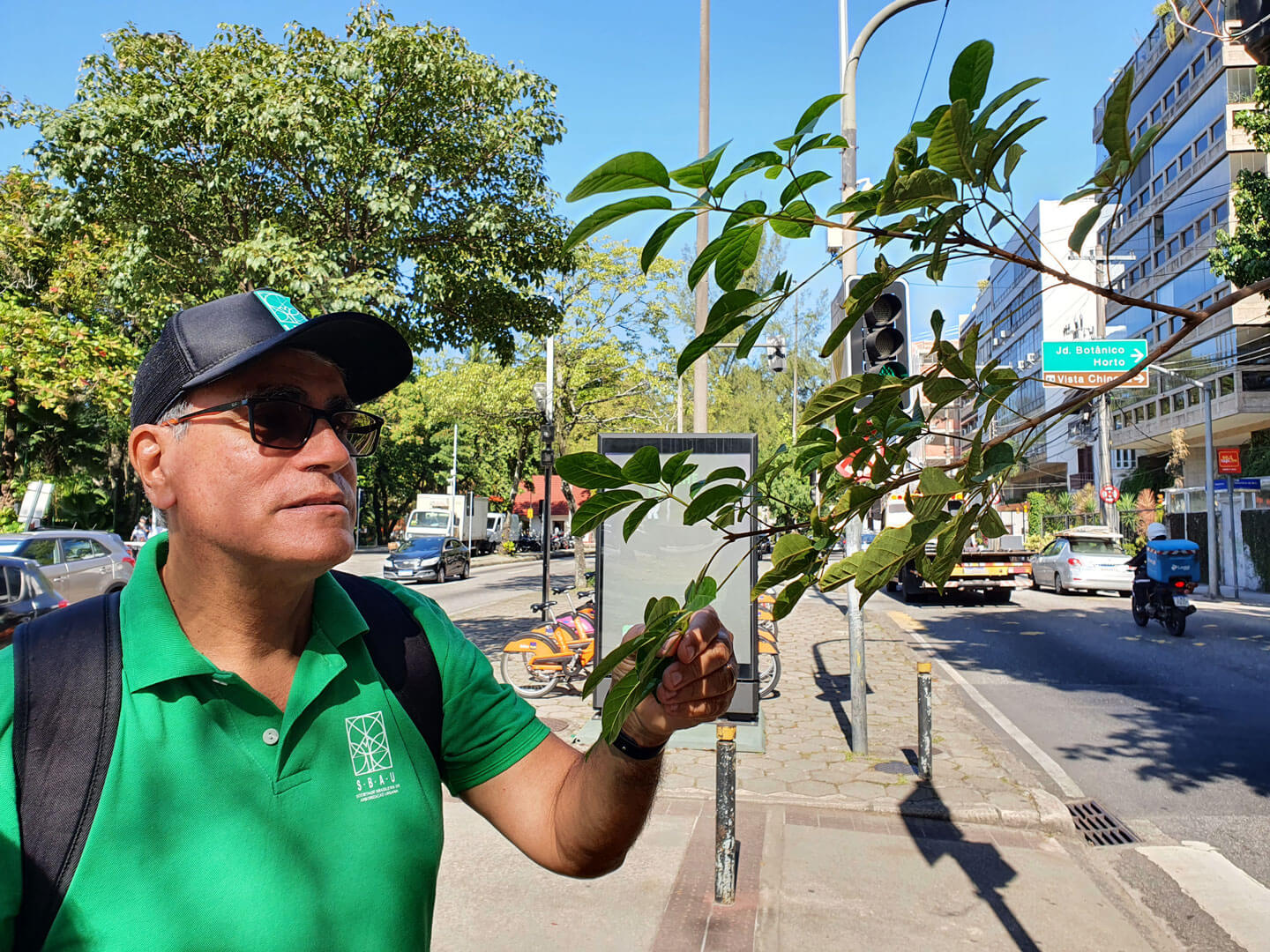
“Long ago people wanted to plant exotic trees but today they prefer native species” says Flavio Telles, pointing to some old Casuarina trees. We met at Lagoa and walk to a 2 km strip of fruit trees recently planted in the middle of Avenida Borges de Medeiros. Flavio, a forestry engineer, worked for Fundação Parques e Jardins (FPJ) [1] for 33 years. The FPJ, which is under the Secretaria Municipal de Meio Ambiente (SMAC) [2] is responsible for planting public spaces in Rio de Janeiro.
The common street trees in Rio are currently alien species (Pedreira, 2015). Casuarina equisitifolia is one of the most abundant exotic species and currently not allowed to be planted in the streets of Rio. Flavio explains: “The architect planned Casuarina trees in the middle of the 20th century. They started dying a long time ago, they are 60 years old. This tree comes from Australia, in Rio it invades the natural vegetation of the areas in front of the sea, known as restinga. It is important to remove it”. Old invasive trees such as Casuarina are considered problematic because they pose a safety risk to urban residents and reduce biodiversity by pushing back native vegetation. According to Flavio, several fruit trees have also been found to be invasive: “Jambolão or Jamelão is an exotic species and presents a similar problem as the jackfruit tree because it invades natural areas”.
It is still common among conservationists to distinguish between harmless native and invasive exotic species. Exotic species are characteristic of Brazil’s history. Their presence has been known since the 18th century, when African grasses were recorded in pastures near Rio de Janeiro (Zenni & Ziller, 2012). Various urban planners and gardeners introduced them to the city of Rio during the colonial period and after. For instance, in the 18th century, the urban planner Valentim da Fonseca e Silva used many exotic fruit trees in his symmetrical and formal designs, including mango and jackfruit (Fundação Parques e Jardins, 2015). Jackfruit is one of the many species that Cariocas consider native, but are in fact foreign.
The language when talking about invasive species is often problematic. Sophie Yeo recently published an essay in which she compares the language of invasive species to the xenophobic language used to describe migrants – species are “invaders, uncontrolled and aggressive” (Yeo, 2020), as well a threat to the country’s native plants and animals. Furtado, who co-founded the organization Hand in the Jackfruit (Mão na Jaca), comments on a similar experience regarding jackfruit: “History loads the jackfruit with prejudice. Today we hear about the jackfruit that stinks,… the violent jackfruit, the invasive jackfruit, it’s true: Jackfruit adapted very well. So everyone who adapted this well to Brazil should be exterminated?” (Biller, 2021).
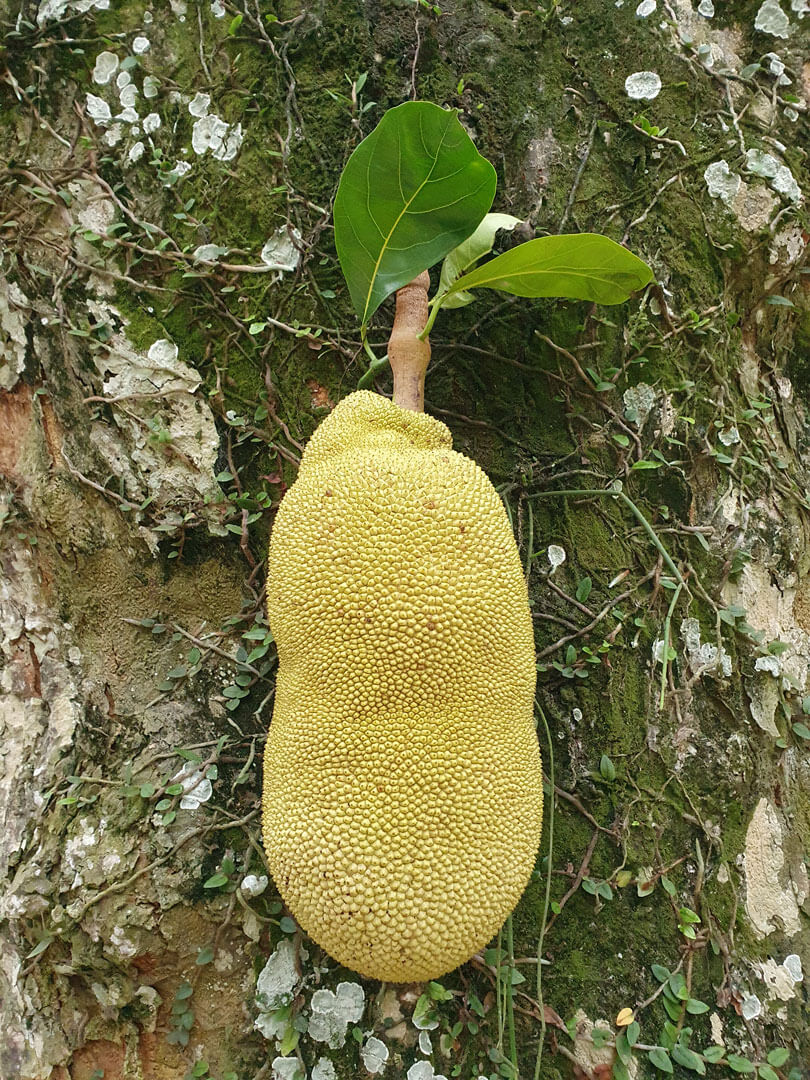
Jackfruit. Photo by the author
There are several exotic species which have adapted to the Brazilian climate and do not pose a problem to the native vegetation. Flavio elaborates: “Both tamarind and mango trees are exotic from India, where the climate is similar. Neither are invasive, so it is good”. Biologist Mark Davis argues that it is not useful “to try to restore ecosystems to some ‘rightful’ historical state” (Davis et al., 2011). Rather, scientists, land managers, and policy makers should take more dynamic and pragmatic approaches to species conservation and management that are appropriate to our current global situation of species introductions and climate change. This would mean including introduced species into design and management plans, rather than trying to achieve the often impossible goal of eradicating them [3].
In urban areas, jackfruits are free fruit for people who do not always have access to them. According to the chef Regina Tchelly, who runs the Favela Organica culinary project, jackfruit could end Brazilian hunger because it is very abundant and contains many nutrients (Biller, 2021). By leading food security specialists, the jackfruit has been recently called a ‘miracle crop’. Danielle Nierenberg, the president of the Food Tank, claims that “[Jackfruit] is easy to grow. It survives pests and diseases and high temperatures. It achieves what farmers need in food production when facing a lot of challenges under climate change” (TFNET, 2014). If Brazil wants to use this opportunity, it will have to invest in green jackfruit production models to achieve scale and impact, and support jackfruit entrepreneurs in transforming the negative perception or the knowledge lack of jackfruit (Weintraub et al., 2022).
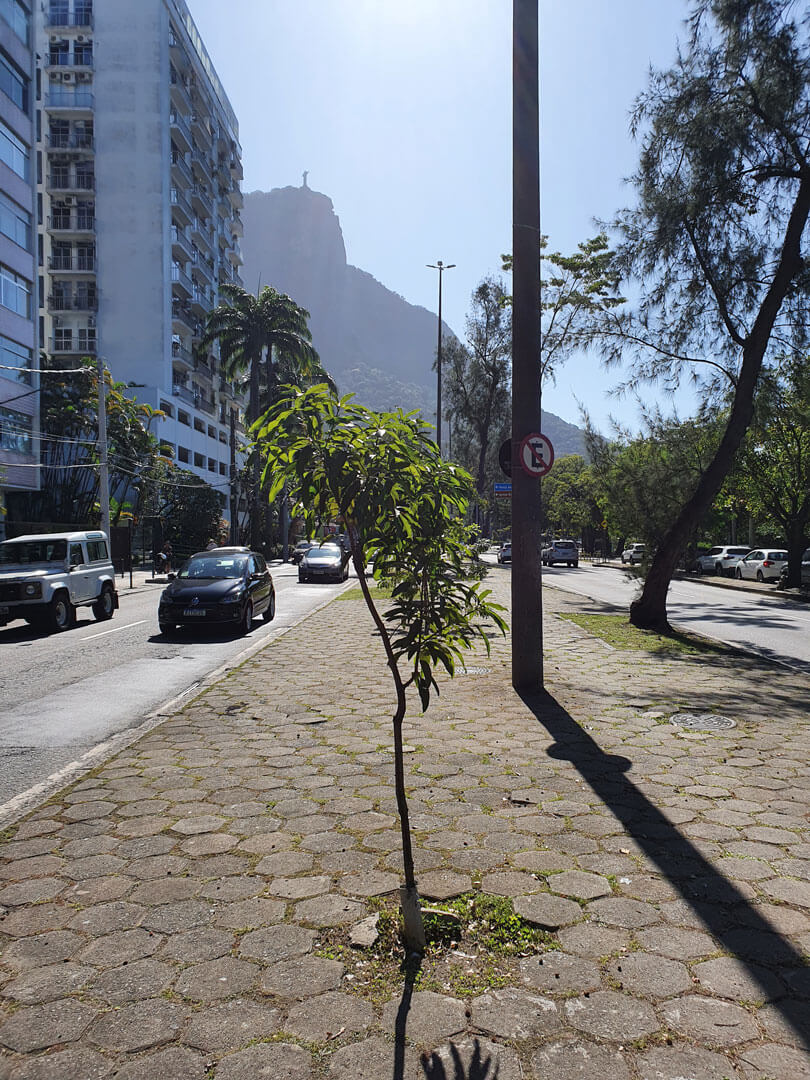
Fruit trees strip in the middle of Avenida Borges de Medeiros. Photo by the author
The 2 km strip of fruit trees that Flavio shows me consists of single trees, growing on small mowed areas surrounded by sealed surfaces. I get the impression that the Fundação Parques e Jardins plantings focus mainly on individual species rather than on interaction. When I ask Flavio why, he explains that single, woody species are preferred in public areas because violence issues: “It often happens that passers-by break off or damage parts of the plants. For a long time, the Fundação used to plant small trees, but now we use 2.5-meters-high trees, and violence is down by 30 percent”.
Of course, safety considerations must be taken into account when planting trees in urban areas. Flavio points out that the cannonball tree, known for its heavy, cannon-like fruits, often causes problems when planted in streets: “Imagine the fruits falling on your head. There is jelly inside the large fruits that animals like to eat, but the smell is not good”. Trees with large roots can damage underground infrastructures, and fruit trees with very sticky pulp can create corrosion problems for car owners.

Cannonball tree. Photo by the author
During my visit with Flavio, I realize that there are many aspects to consider when planting in public areas. This is probably the reason why only the Fundação Parques e Jardins is allowed to plant in these areas. The Plano Diretor de Arborização Urbana de Rio de Janeiro (Urban Forestry Master Plan of Rio) – a new, comprehensive document from the Secretaria Municipal de Meio Ambiente – provides an overview of these many aspects. This master plan “establishes the necessary guidelines for a policy of implementation, monitoring, evaluation, conservation and expansion of urban forestation” (Fundação Parques e Jardins, 2015). Flavio co-authored it with other applied scientists and tells me that parts of it have already been implemented.
This plan also focuses on individual species. There is a whole chapter compiling the opinion of different experts on the most suitable and unsuitable species for the city of Rio. The most suitable species are mainly native Brazilian species, some of them from the Atlantic Forest. The most unsuitable species are trees with large fruits and fruit trees in general. This coincides with the findings of a study that analyzed 58 Urban Forestry Master Plans in different Brazilian cities: Human food consumption is not a primary goal of urban forestry planning (Vannozzi Brito & Borelli, 2020). Rather, the conservation of non-edible native species is the main concern.
In contrast, another study found that native edible species from Brazil have a very high potential for urban forestry and not only contribute to human food security but also provide shelter and food for wildlife (Brun et al., 2019). Flavio also prefers to plant fruit trees – native and with small fruits that are good for children and various animals, while not causing accidents when they fall on the street.

Street tree with lack of space. Photos from the PDAU.
In urban areas of Rio, trees have to face a series of obstacles: electricity networks, house entrances, lack of space and mistletoe among others. They are often left to fend for themselves, as they are rarely cared for and there are few companion species [4].
However, in the eyes of city dwellers, these trees also cause many problems. Tree pruning, removal and risk of trees falling over were cited by citizens in 2014 as the most criticized services and problems (Fundação Parques e Jardins, 2015). Flavio explains that people have different opinions about urban trees depending on their living situation: “People in the poorer areas, especially in the North of Rio city, ask to cut down the trees in their neighborhoods because they think the trees cause damage, trash and take light. People in the wealthier areas, on the other hand, say: Do not cut the trees”. The reason could also be that neighborhoods with higher mean income index receive better services from municipality, including streets with more trees, than poorer, newer, and more peripheral neighborhoods (dos Santos et al., 2010). According to dos Santos, the number of trees, together with the geomorphological characteristics of the city, affect the microclimate in the neighborhoods. In the South District – the area with the highest mean income index – the climate is pleasantly cooled by the ocean breeze and Tijuca Park. However, the Tijuca and Pedra Branca Parks prevent the ocean breeze from reaching the city’s North and West Districts, whose tree cover is not sufficient to cool them.
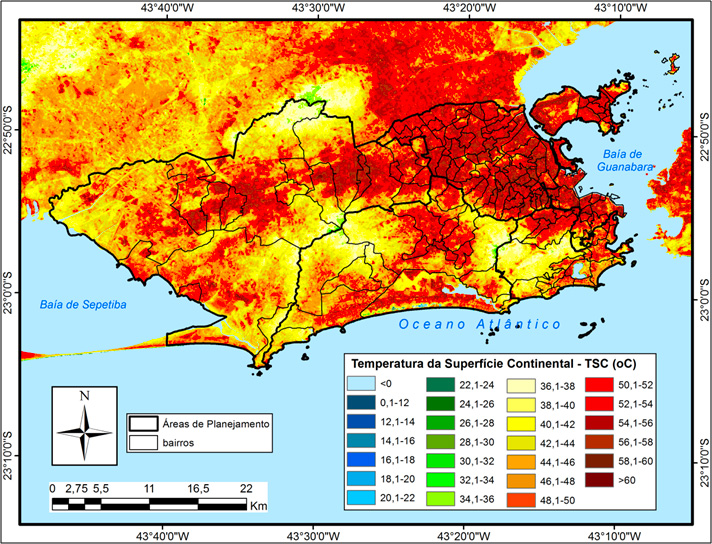
Map of maximum Continental Surface Temperature (CSS) for the period between 1984 and 2010 in the city of Rio de Janeiro (planning areas and neighborhoods). Map from the PDAU.
The PDAU’s goal is to “enhance the quality of life and promote environmental sustainability” (Fundação Parques e Jardins, 2015). This can only be achieved if trees are planted and maintained in communities in poorer and more peripheral neighborhoods as well. Another study comparing top-down and community-based forms of ecosystem management found that education and effective public participation are key to long-term conservation and promotion of urban biodiversity (Herzog & Finotti, 2013).
Education also appears to be important in preventing vandalism against street trees and in valorizing the jackfruit as an alternative, healthy food source. If we as humans recognized the value of urban trees as companion species, we would seek to improve their lives in the city. This would mean higher levels of health and resilience for both people and plants. To get an inspiring example of multispecies urban development and community learning the Fundação Parques e Jardins should visit the Dja Guata Porã garden.
Endnotes
- Parks and Gardens Foundation.
- Municipal Secretariat of the Environment.
- For example, in the Tijuca National Park, “between 2000 and 2005, they cut 1571 trees and rung another 813, in addition to uprooting almost 40,000 seedlings, without any proven efficacy in terms of real reduction of jackfruit populations in the park” (Cabral et al., 2020).
- Companion species can be plants, animals, and other components that work together to help and ensure their health and productivity.
References
- Bevilaqua, C. (2021). Cada apartamento uma oca. Piseagrama, 104–111. https://piseagrama.org/cada-apartamento-uma-oca/
- Biller, D. (2021). Danger or delight? Uphill battle for Brazil’s huge jackfruit. ABC News . https://abcnews.go.com/Lifestyle/wireStory/danger-delight-uphill-battle-brazils-huge-jackfruit-76182430
- Brun, F. G. K., Link, D., & Brun, E. J. (2019). O emprego da arbrização na manutenção da biodiversidade de fauna em áreas urbanas. Revista Da Sociedade Brasileira Arborização Urbana, 2(117). https://doi.org/http://dx.doi.org/10.5380/revsbau.v2i1.66253
- Davis, M., Chew, M., Hobbs, R., Lugo, A., Ewel, J., Vermeij, G., Brown, J., Rosenzweig, M., Gardener, M., Carroll, S., Thompson, K., Pickett, S. T. A., Stromberg, J., del Tredici, P., Suding, K., Ehrenfeld, J., Grime, J., Mascaro, J., & Briggs, J. (2011). Don’t judge species on their origins. Nature, 474, 153–154. https://doi.org/10.1038/474153a
- de la Bellacasa, M. P. (2017). Matters of Care: Speculative Ethics in More than Human Worlds. University of Minnesota Press. http://www.jstor.org/stable/10.5749/j.ctt1mmfspt
- dos Santos, A. R., da Rocha, C. F. D., & Bergallo, H. G. (2010). Native and exotic species in the urban landscape of the city of Rio de Janeiro, Brazil: density, richness, and arboreal deficit. Urban Ecosystems, 13(2), 209–222. https://doi.org/10.1007/s11252-009-0113-z
- Fundação Parques e Jardins. (2015). Plano Diretor de Arborização Urbana de Rio de Janeiro. http://www.rio.rj.gov.br/dlstatic/10112/5560381/4146113/PDAUtotal5.pdf
- Herzog, C. P., & Finotti, R. (2013). Local Assessment of Rio de Janeiro City: Two Case Studies of Urbanization Trends and Ecological Impacts. In T. Elmqvist, M. Fragkias, J. Goodness, B. Güneralp, P. J. Marcotullio, R. I. McDonald, S. Parnell, M. Schewenius, M. Sendstad, K. C. Seto, & C. Wilkinson (Eds.), Urbanization, Biodiversity and Ecosystem Services: Challenges and Opportunities: A Global Assessment (pp. 609–628). Springer Netherlands. https://doi.org/10.1007/978-94-007-7088-1_29
- Nair, P. K. (1993). An Introduction to Agroforestry (International Centre for Research in Agroforestry, Ed.). Springer Dordrecht.
- National Museum of Rio de Janeiro, & Federal University of Rio de Janeiro (UFRJ). (2018). Os primeiros brasileiros. https://osprimeirosbrasileiros.mn.ufrj.br/en/presentation/
- Pedreira, L. O. de L. (2015). The urban forests of Rio de Janeiro City: integrating forests and other land uses for providing environmental and social services.
- Vannozzi Brito, V., & Borelli, S. (2020). Urban food forestry and its role to increase food security: A Brazilian overview and its potentialities. Urban Forestry & Urban Greening, 56, 126835. https://doi.org/https://doi.org/10.1016/j.ufug.2020.126835
- Vasconcelos, J., & Tahyrine, I. (2022). Conheça os Fulni-ô, povo indígena que habita o município de Águas Belas. Brasil de Fato. https://www.brasildefatope.com.br/2022/02/15/conheca-os-fulni-o-povo-indigena-que-habita-o-municipio-de-aguas-belas
- Yeo, S. (2020). Is it time to rethink the language around “non-native” species? Inkcap. https://inkcap.substack.com/p/is-it-time-to-rethink-the-language
- Zenni, R., & Ziller, S. (2012). An overview of invasive plants in Brazil. Brazilian Journal of Botany, 34, 431–446. https://doi.org/10.1590/S0100-84042011000300016
Realization



Production
